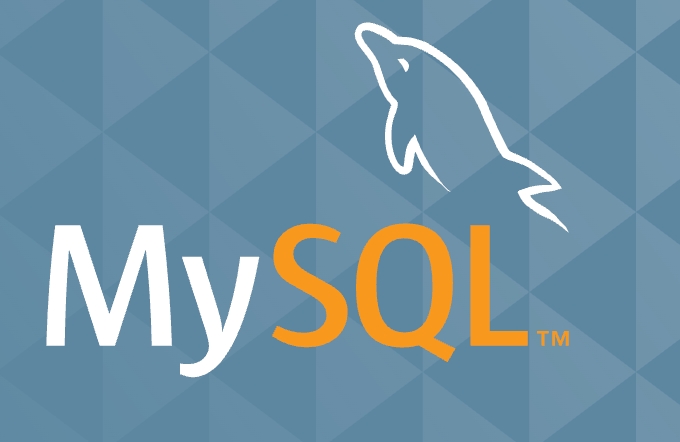To secure MySQL backups using GPG encryption, follow these steps: first, create a backup using mysqldump and compress it with gzip, then encrypt the compressed file using gpg --encrypt with a recipient's key or use --symmetric for passphrase-based encryption; automate this with a Bash script that includes variables for customization and optional cleanup of unencrypted files; schedule the script via cron for regular backups; when restoring, decrypt the backup using gpg --decrypt, decompress it, and import the SQL file into MySQL, ensuring GPG keys are available on the target system.

When you're dealing with MySQL backups, especially in environments where sensitive data is involved, simply having a backup isn't enough. You also need to protect the backup files from unauthorized access. One effective way to do this is by using GPG (GNU Privacy Guard) to encrypt your MySQL backup files.

Why Encrypt MySQL Backup Files?
Before diving into the how, it's worth quickly touching on the why. Backup files often contain full copies of databases — including user data, passwords, and other sensitive information. If these files fall into the wrong hands, it can lead to data breaches or leaks.
GPG encryption allows you to secure these files using strong public-key cryptography. You can encrypt the backup so that only someone with the correct private key (or passphrase, in symmetric encryption) can decrypt and access the contents.

How to Create an Encrypted MySQL Backup with GPG
The process involves two main steps: creating the backup file using mysqldump, and then encrypting it using GPG.
Here's a basic example of how to do this from the command line:

mysqldump -u [username] -p[password] [database_name] | gzip > backup.sql.gz gpg --output backup.sql.gz.gpg --encrypt --recipient [your_email] backup.sql.gz
Breaking this down:
mysqldumpcreates a SQL dump of your database.- The output is piped through
gzipto compress it. - Then,
gpgis used to encrypt the compressed file. --recipientspecifies the GPG key to use for encryption.
Tip: If you're using a symmetric encryption method (i.e., using a passphrase instead of a key pair), you'd use the
--symmetricoption instead of--encryptand--recipient.
Automating Encrypted Backups with a Script
If you're managing a production system, you'll probably want to automate this process. A simple Bash script can handle daily backups and encryption.
Here’s a basic script outline:
#!/bin/bash DATE=$(date %Y%m%d) DB_USER="your_db_user" DB_PASS="your_db_pass" DB_NAME="your_db_name" BACKUP_DIR="/path/to/backup/dir" GPG_RECIPIENT="your@email.com" # Create compressed backup mysqldump -u $DB_USER -p$DB_PASS $DB_NAME | gzip > $BACKUP_DIR/backup-$DATE.sql.gz # Encrypt the backup gpg --output $BACKUP_DIR/backup-$DATE.sql.gz.gpg --encrypt --recipient $GPG_RECIPIENT $BACKUP_DIR/backup-$DATE.sql.gz # Optional: Remove the unencrypted file rm $BACKUP_DIR/backup-$DATE.sql.gz
This script:
- Sets up variables for easier customization
- Uses
dateto version your backups - Performs the backup and encryption
- Optionally deletes the unencrypted file
You can schedule this script using cron for daily or weekly backups.
Decrypting MySQL Backup Files
When you need to restore a backup, you’ll need to decrypt it first. Here's how you'd do that:
gpg --output backup.sql.gz --decrypt backup.sql.gz.gpg gunzip backup.sql.gz mysql -u [username] -p[password] [database_name] < backup.sql
What's happening here:
-
gpg --decryptwill prompt you for a passphrase or automatically use your key if it's in your keyring. - After decryption, you decompress the
.gzfile. - Finally, you import the SQL file back into MySQL.
Make sure your GPG keys are properly imported and trusted on the machine you're restoring on.
That's the core process. It's not complicated, but there are a few moving parts — especially if you're automating or managing multiple databases. But once it's set up, GPG encryption gives you peace of mind that your backups are both safe and secure.
The above is the detailed content of Securing MySQL Backup Files with GPG Encryption. For more information, please follow other related articles on the PHP Chinese website!

Hot AI Tools

Undress AI Tool
Undress images for free

Undresser.AI Undress
AI-powered app for creating realistic nude photos

AI Clothes Remover
Online AI tool for removing clothes from photos.

Clothoff.io
AI clothes remover

Video Face Swap
Swap faces in any video effortlessly with our completely free AI face swap tool!

Hot Article

Hot Tools

Notepad++7.3.1
Easy-to-use and free code editor

SublimeText3 Chinese version
Chinese version, very easy to use

Zend Studio 13.0.1
Powerful PHP integrated development environment

Dreamweaver CS6
Visual web development tools

SublimeText3 Mac version
God-level code editing software (SublimeText3)
 Performing logical backups using mysqldump in MySQL
Jul 06, 2025 am 02:55 AM
Performing logical backups using mysqldump in MySQL
Jul 06, 2025 am 02:55 AM
mysqldump is a common tool for performing logical backups of MySQL databases. It generates SQL files containing CREATE and INSERT statements to rebuild the database. 1. It does not back up the original file, but converts the database structure and content into portable SQL commands; 2. It is suitable for small databases or selective recovery, and is not suitable for fast recovery of TB-level data; 3. Common options include --single-transaction, --databases, --all-databases, --routines, etc.; 4. Use mysql command to import during recovery, and can turn off foreign key checks to improve speed; 5. It is recommended to test backup regularly, use compression, and automatic adjustment.
 Calculating Database and Table Sizes in MySQL
Jul 06, 2025 am 02:41 AM
Calculating Database and Table Sizes in MySQL
Jul 06, 2025 am 02:41 AM
To view the size of the MySQL database and table, you can query the information_schema directly or use the command line tool. 1. Check the entire database size: Execute the SQL statement SELECTtable_schemaAS'Database',SUM(data_length index_length)/1024/1024AS'Size(MB)'FROMinformation_schema.tablesGROUPBYtable_schema; you can get the total size of all databases, or add WHERE conditions to limit the specific database; 2. Check the single table size: use SELECTta
 Handling character sets and collations issues in MySQL
Jul 08, 2025 am 02:51 AM
Handling character sets and collations issues in MySQL
Jul 08, 2025 am 02:51 AM
Character set and sorting rules issues are common when cross-platform migration or multi-person development, resulting in garbled code or inconsistent query. There are three core solutions: First, check and unify the character set of database, table, and fields to utf8mb4, view through SHOWCREATEDATABASE/TABLE, and modify it with ALTER statement; second, specify the utf8mb4 character set when the client connects, and set it in connection parameters or execute SETNAMES; third, select the sorting rules reasonably, and recommend using utf8mb4_unicode_ci to ensure the accuracy of comparison and sorting, and specify or modify it through ALTER when building the library and table.
 Implementing Transactions and Understanding ACID Properties in MySQL
Jul 08, 2025 am 02:50 AM
Implementing Transactions and Understanding ACID Properties in MySQL
Jul 08, 2025 am 02:50 AM
MySQL supports transaction processing, and uses the InnoDB storage engine to ensure data consistency and integrity. 1. Transactions are a set of SQL operations, either all succeed or all fail to roll back; 2. ACID attributes include atomicity, consistency, isolation and persistence; 3. The statements that manually control transactions are STARTTRANSACTION, COMMIT and ROLLBACK; 4. The four isolation levels include read not committed, read submitted, repeatable read and serialization; 5. Use transactions correctly to avoid long-term operation, turn off automatic commits, and reasonably handle locks and exceptions. Through these mechanisms, MySQL can achieve high reliability and concurrent control.
 Managing Character Sets and Collations in MySQL
Jul 07, 2025 am 01:41 AM
Managing Character Sets and Collations in MySQL
Jul 07, 2025 am 01:41 AM
The setting of character sets and collation rules in MySQL is crucial, affecting data storage, query efficiency and consistency. First, the character set determines the storable character range, such as utf8mb4 supports Chinese and emojis; the sorting rules control the character comparison method, such as utf8mb4_unicode_ci is case-sensitive, and utf8mb4_bin is binary comparison. Secondly, the character set can be set at multiple levels of server, database, table, and column. It is recommended to use utf8mb4 and utf8mb4_unicode_ci in a unified manner to avoid conflicts. Furthermore, the garbled code problem is often caused by inconsistent character sets of connections, storage or program terminals, and needs to be checked layer by layer and set uniformly. In addition, character sets should be specified when exporting and importing to prevent conversion errors
 Connecting to MySQL Database Using the Command Line Client
Jul 07, 2025 am 01:50 AM
Connecting to MySQL Database Using the Command Line Client
Jul 07, 2025 am 01:50 AM
The most direct way to connect to MySQL database is to use the command line client. First enter the mysql-u username -p and enter the password correctly to enter the interactive interface; if you connect to the remote database, you need to add the -h parameter to specify the host address. Secondly, you can directly switch to a specific database or execute SQL files when logging in, such as mysql-u username-p database name or mysql-u username-p database name
 Setting up asynchronous primary-replica replication in MySQL
Jul 06, 2025 am 02:52 AM
Setting up asynchronous primary-replica replication in MySQL
Jul 06, 2025 am 02:52 AM
To set up asynchronous master-slave replication for MySQL, follow these steps: 1. Prepare the master server, enable binary logs and set a unique server-id, create a replication user and record the current log location; 2. Use mysqldump to back up the master library data and import it to the slave server; 3. Configure the server-id and relay-log of the slave server, use the CHANGEMASTER command to connect to the master library and start the replication thread; 4. Check for common problems, such as network, permissions, data consistency and self-increase conflicts, and monitor replication delays. Follow the steps above to ensure that the configuration is completed correctly.
 Using Common Table Expressions (CTEs) in MySQL 8
Jul 12, 2025 am 02:23 AM
Using Common Table Expressions (CTEs) in MySQL 8
Jul 12, 2025 am 02:23 AM
CTEs are a feature introduced by MySQL8.0 to improve the readability and maintenance of complex queries. 1. CTE is a temporary result set, which is only valid in the current query, has a clear structure, and supports duplicate references; 2. Compared with subqueries, CTE is more readable, reusable and supports recursion; 3. Recursive CTE can process hierarchical data, such as organizational structure, which needs to include initial query and recursion parts; 4. Use suggestions include avoiding abuse, naming specifications, paying attention to performance and debugging methods.






